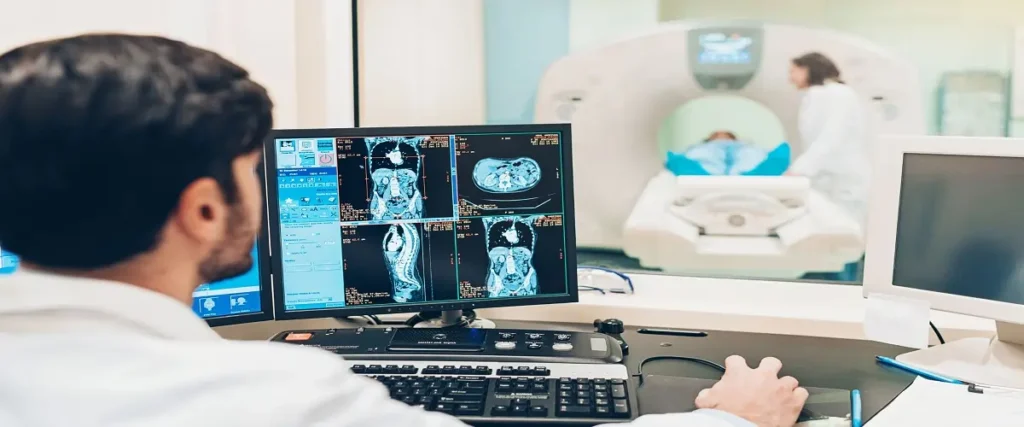
Role of Molecular Imaging for Head and Neck Cancers Diagnosis
Early detection and accurate staging are critical in treating head and neck cancers. At Neurad Diagnostic Centre, we specialize in offering cutting-edge diagnostic tools, particularly the role of molecular imaging for head and neck cancers diagnosis, which is revolutionizing the way these cancers are identified and managed.
What is Molecular Imaging?
Molecular imaging is an advanced diagnostic technique that allows physicians to visualize biological processes at the cellular and molecular levels inside the body. Unlike traditional imaging methods, molecular imaging focuses on the functionality and metabolism of tissues, providing more precise and early detection of cancerous activities.
Why Head and Neck Cancers Require Advanced Imaging
Head and neck cancers encompass a range of malignancies in areas like the throat, larynx, nose, sinuses, and mouth. These cancers are often difficult to detect early due to subtle symptoms. The role of molecular imaging for head and neck cancers diagnosis is vital in:
Detecting tumors at an early stage
Differentiating benign from malignant growths
Planning treatment strategies
Monitoring therapy effectiveness
Role of Molecular Imaging for Head and Neck Cancers Diagnosis
At Neurad Diagnostic Centre, we leverage PET-CT scans, SPECT imaging, and MRI with contrast agents to support our molecular imaging techniques. The role of molecular imaging for head and neck cancers diagnosis is multifaceted:
Early Detection: Identifies biochemical changes before anatomical changes appear.
Staging Cancer Accurately: Determines the extent of cancer spread.
Personalized Treatment Planning: Helps oncologists tailor therapies based on metabolic activity.
Evaluating Treatment Response: Tracks how well cancer is responding to treatments like chemotherapy or radiation.
Recurrence Monitoring: Detects if the cancer has returned after treatment.
Technologies We Use at Neurad Diagnostic Centre
FDG-PET (Fluorodeoxyglucose Positron Emission Tomography)
SPECT-CT (Single Photon Emission Computed Tomography)
Advanced MRI techniques with functional imaging
Radiotracers that target specific cancer biomarkers
Benefits of Molecular Imaging in Head and Neck Oncology
Non-invasive precision
Early diagnosis of micro-metastases
Lower radiation exposure compared to traditional scans
Guidance for biopsies and surgeries
Reduced need for exploratory surgery
Why Choose Neurad Diagnostic Centre?
At Neurad Diagnostic Centre, we’re committed to delivering world-class diagnostic care. With expert radiologists, state-of-the-art equipment, and a patient-first approach, we ensure that the role of molecular imaging for head and neck cancers diagnosis is fully optimized for every individual. Our services include:
Comprehensive imaging reports
Collaboration with oncologists and surgeons
Personalized diagnostic plans
Comfortable and private testing environment
FAQs about Molecular Imaging for Head and Neck Cancers Diagnosis
What makes molecular imaging different from traditional imaging techniques?
Molecular imaging focuses on functional processes and metabolic activity rather than just anatomical structures, allowing for earlier and more accurate cancer diagnosis.
Is molecular imaging safe for repeated use?
Yes, molecular imaging generally uses safe doses of radiotracers and has a lower radiation risk compared to many conventional scans.
How long does a typical PET-CT scan take?
A PET-CT scan usually takes 1 to 2 hours, depending on the body part being examined and the radiotracer used.
Can molecular imaging help in treatment planning?
Absolutely. It offers detailed information about tumor activity, helping doctors decide on the most effective therapy options.
Does Neurad Diagnostic Centre accept insurance for molecular imaging tests?
Yes, we work with most major insurance providers. Please contact us to confirm your coverage.
